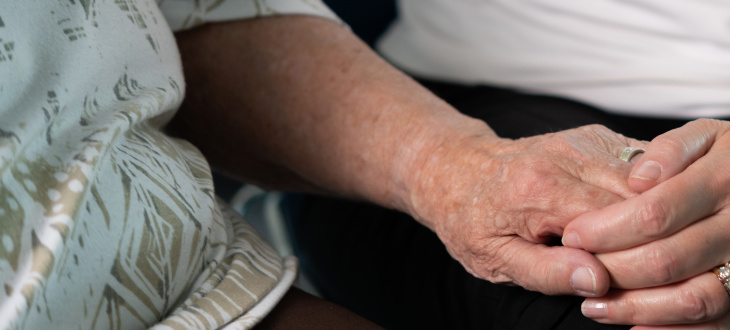In the near twenty years that I have been president of the Nova Scotia Nurses’ Union, few occurrences have touched me as profoundly as the recent tragic events in our province, namely the mass shooting and COVID-19 outbreak at Northwood Halifax Campus. So many lives were changed as a result of these events and so many lessons have been learned.
Fifty-three of the 65 Nova Scotians who have died so far from the virus were residents at Northwood. 246 residents and 99 staff have tested positive for COVID-19 at that facility since early April.
Like everyone else, I’ve been eager for information to emerge and for restorative action to occur. From a professional perspective, I was hopeful that what transpired at Northwood would lead to solid recommendations, instilling confidence in nurses and others who work in our nursing homes.
In June, the Nova Scotia government announced it would conduct a review to examine how and why COVID-19 was able to infect Northwood, as well as a separate review of infection prevention and control in the province's long-term care sector. A second review would look at the overall long-term care sector.
Infectious disease consultant Dr. Chris Lata, and Lynn Stevenson, former British Columbia associate deputy minister of health, were asked to lead the review. On September 21, they released their findings, including 17 recommendations for Northwood and another 13 to improve care and help prevent and contain future outbreaks while enabling all of Nova Scotia’s 133 long-term care facilities to better prepare for the future.
I, like many others, was asked to share my views and the positions of the NSNU before the review panel. The panel spoke with LTC staff, physicians, administrators, some family members of Northwood residents, labour leaders and others. My interview was conducted on July 30th.
The investigators found there were multiple interconnected drivers; the key factors that contributed to the outbreak involved:
- Staffing challenges including shortages for direct care and housekeeping staff
- Community transmission that may have increased staff exposure to the virus
- Structural challenges including space constraints, shared rooms and bathrooms, limited ability to control temperature, humidity, and air flow turnover
- Barriers to enhanced room and floor cleaning and inconsistent cleaning techniques
Understanding the reasons why this happened informs decisions on how to arrive at recommendations and enact change.
In my opinion, the recommendations are aimed at safeguarding our most vulnerable citizens, not just during a pandemic but at all times. Many of the recommendations mirror information released in NSNU’s 2016 Broken Homes report on long term care and the most recent brief of June 2020 on Staffing Standards. Although the Nurses’ Union is pleased to see a commitment from government around PPE management, infection control, enhanced communication and a funding commitment of $26 million this fiscal year, the Union is disappointed government only agrees in principle with some of the staffing solutions offered up by the panel.
All of the recommendations have merit and should be implemented. Most notably, recommendations on staffing ratios and hours of care per resident. The evidence clearly indicates that increases in overall health human resources is fundamental to improving long term care outcomes, especially during times of crisis.
Dr. Lata and Lynn Stevenson cited NSNU and CFNU research data and other information as they similarly call for a solid commitment from government to set standard minimum hours of care per resident.
Again, echoing Broken Homes and Staffing Standards in the last recommendation in the Northwood report: to develop and implement a robust human resources plan. The recommendation states, in order to attract, develop and retain the best caregivers there is an urgent need to define and execute a vision for the future of the LTC sector workforce.
We’ve been very clear that the collection, reporting and analysis of morbidity and mortality data by LTC site, with implementation of the International Resident Assessment Instrument for Long Term Care Facilities (interRAI system), is a must. Lata and Stevenson agree.
The investigators also recommended an immediate review and update of pandemic action plans to ensure the ability to operationalize it, keeping an eye on critical staff losses as a priority (e.g. 5+ nurses need to self-isolate). NSNU explicitly included this in our Staffing Standards for Nova Scotia Long-term Care (June 2020).
In Staffing Standards, we stated that we need the Department of Health and Wellness to install dedicated clinical Infection Prevention and Control (IPAC). NSNU identified the lack of dedicated IPAC resources for LTC and the need for DHW oversight in this area.
The government has taken some important steps, but their response does not go far enough. Without an assurance that appropriate staffing levels will be an immediate priority, I cannot see how we’ll be fully prepared if a second wave of COVID-19 strikes our nursing homes.
Bedsores, falls, and other pre COVID-19 issues in long term care should have been the impetus for government to address staffing issues in the long-term care sector long before the pandemic. COVID-19 should have compelled government to commit to hiring more nurses. What will it take to convince government of this urgent necessity?
Our collective goal is to help avoid or contain future outbreaks. We cannot do that without ample and appropriate staffing supports – nurses and others – as an integral part of the immediate plan.
We again thank our long-term care nurses for their dedication, skill, knowledge and heart, and we thank those who went to Northwood at their darkest hour.
Both the Northwood Report and COVID-19 First Wave Review can be found at nsnu.ca/Coronavirus.

 Login Members Only
Login Members Only

